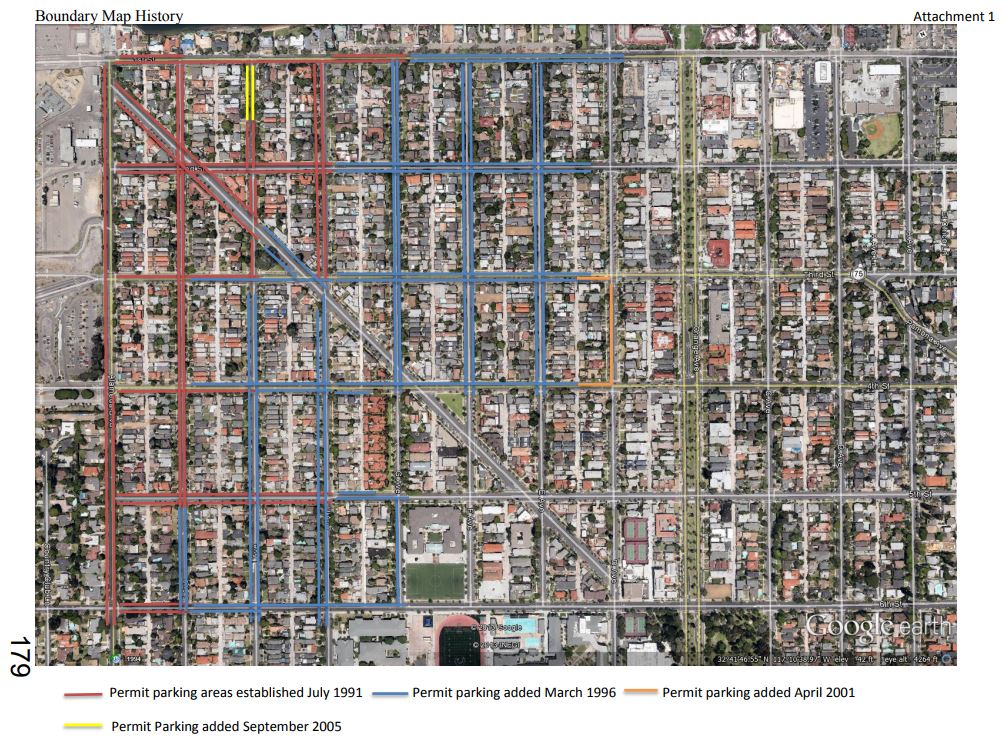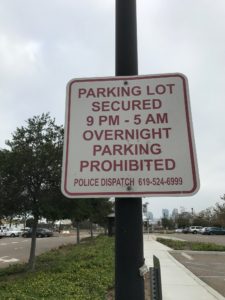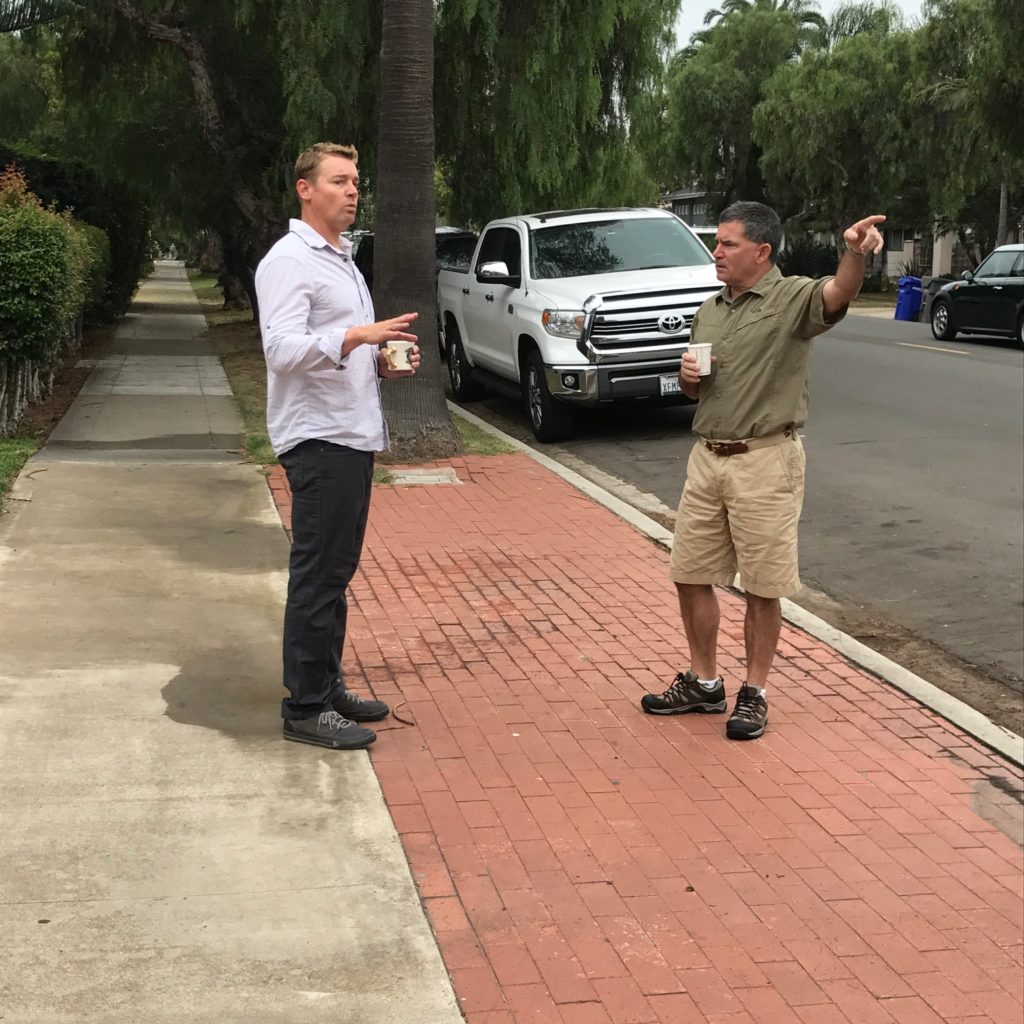On October 3, some Coronado residents were surprised to learn that the City Council had voted to temporarily suspend the Residential Parking Permit zones on the island. The item was listed as 10e. on the City Council Agenda: Provide Direction Related to the Local Coastal Program Decal Parking Permit Zone.
Residents were surprised because while the item was made public on the agenda, no residents whom it might affect had been notified that a decision was being taken. Not surprisingly, then, when the item came up for discussion at the meeting, no one from the public made any comments.
Further adding to the confusion was Mayor Bailey’s social media recap, following what was apparently a marathon meeting, telling residents about the decision, but saying that it impacted only the area near NASNI (“the northwest region of Coronado”).
In City Manager Blair King’s “City Manager’s Weekly Update” on October 6, it was indicated that the suspension included all zones: “Decal Parking Permit Zone: The City Council has directed staff to suspend the City’s Decal Parking Permit Zone for a trial period. The zone was established in 1991 to protect the residential character of the neighborhood near Naval Air Station North Island. At the time, Navy personnel parking off base significantly impacted the area. The initial parking boundaries were expanded in 1996, 2001 and 2005. The Council action, taken Tuesday, October 3, revokes permits and calls for the removal of street signs for a one-year trial period. A letter is being drafted to inform area residents about the trial period.”

Background
The residential “Decal Parking Permit zone” was initially established in 1991 in response to Navy personnel parking in the residential neighborhood mostly adjacent to base and disrupting parking for the residents of the neighborhood. Over time, Decal Parking Permit Zone boundaries expanded to other areas of town for a variety of reasons – for instance, near the schools.
The justification the City Council used for considering a change primarily hinged on changes the Navy has made to who can drive on base and to the addition of visitor parking spots on Navy property, but still outside the security gates. As King noted in his update: “Since 2005, the Navy has made significant changes to the NASNI entrance, including adding 205 additional parking spaces and has in recent years eliminated a vehicle sticker program. Both minimized the impacts on the local neighborhoods.”
Other complaints about the program have been made, including that it disadvantages those who are on the edge of a zone, particularly the 300 block of D where on one side of the street, residents have stickers (and can park on either side of the street) and on the other, they do not (limiting them to parking on the one side).
Change had been considered in 2014, at which time residents who would have been affected came to the Council to speak against making any changes. At that time, the City Council chose to take no action.
Following the decision in 2014, however, the Police Department undertook an evaluation of the permit parking. They found that citations dropped from 455 in 2014 to 28 in the first half of 2017 (and that 25% of those issued in 2017 were dismissed). With this data and the changes on base in mind, the City Council directed staff to put a discussion of the program on a future agenda.
The Decision
The City Council voted unanimously to suspend the current decal parking program for a period of a year. The suspension would include informing residents, taking down the parking information signs, and ceasing enforcement in the decal zones. The decision was pushed along by Mayor Bailey who said, “I like the idea of trying things, getting real data behind it. I know some residents in that quadrant might have some concerns…”
When no member of the public stood to speak against (or for) the action, Councilman Sandke asked, “Did we miss an opportunity to inform those residents that we were, in fact, considering this?”
City Manager, Blair King, confirmed that there had been “no public notification, extraordinary… for this agenda item.”
In his summary of the meeting, Mayor Bailey wrote: “Permitted Parking Zone – The city council temporarily suspended the permitted parking zone located in the northwest region of Coronado. The original reasons for creating the permitted parking zone no longer exist so the council decided to temporarily suspend the program, remove the signs, and see what happens. If the Navy personnel and/or contractors flood the residential neighborhoods with parked cars then we can always end the suspension and reinstall the signs.”
The Aftermath
Shortly after word spread about the decision, residents began to react. Not surprisingly, people came out on both sides of the issue. On the one hand, some were happy because they had been adversely impacted by living on the edge of a decal parking zone. And, some people felt that the decal parking tended to “privatize” the streets in a way that was inappropriate for public space and that the parking simply was no longer needed.
Michael Horvath wrote in a post on Facebook: “The bottom line is that these are PUBLIC streets … I, for one, have received tickets for parking near my home, which I find disturbing and not in the ‘spirit of the law.’”
And, Dan Orr did something that Councilman Sandke said rarely happens – he thanked the City Council: “As for me, thank you to the Navy for alleviating the situation and thank you to the city for supporting us thirty years ago and for knowing when a useless ordinance needs to be stricken from the books.”

However, there were other residents who took issue with the decision on a number of grounds. In particular, Aaron Vernopolis wrote a letter to the City Council to express his surprise that the decision was made without “any discussion with the public or previous notification.” The rest of Vernopolis’ remarks were directed toward the issue as it relates just to the zone adjacent to the Navy visitor parking. He pointed out that the additional parking spots don’t actually address the problem of parking because the parking lot is open only until 9 pm and is secured after that, thus making the adjacent neighborhood vulnerable to those who want to leave their cars for extended periods of time.
Other residents indicated serious concerns about suspending the zone near the schools, saying that it is already difficult enough to park on their streets when there are sports and other evening events. They argue that if the parking zone is suspended, the same level of difficulty will apply during daytime hours as well.
What Next
Vernopolis shared that the Mayor responded to his letter saying that the only way the decision can now be rescinded is if a member of the City Council asks the City Council as a whole to reconsider. This is what he was hoping that Bill Sandke might do when he invited him to meet with a group of affected neighbors at a breakfast meeting on Friday, October 13.

Sandke listened and answered questions, but did not commit to asking the Council to reconsider. He did, however, commit to the following: to look into the enforcement history, upon which the decision was based; to check with the Navy to better understand their parking accommodations; to consider whether the program could be made smaller; and, finally, to check in as to why there was no notification to residents.
As one of those present at the meeting repeated several times: “What problem are you trying to solve? If you are trying to solve a problem that has to do with someone in a different zone, where they have decals for one side of the street and not for the other, then solve that problem. We don’t have a problem here.”
Another attendee said, “This is a train wreck waiting to happen and your plan is to just pick everything up afterward. Why? Let’s just prevent the train wreck.”
Sandke replied that, “Staff and Council felt the program was no longer necessary. Perhaps we jumped the gun.”
Another point that remained insufficiently explained was just how data would be collected during the suspension period to understand the impact it was having.
It would appear that, at this point, those who are concerned about the zones (one way or another) will need to contact City Council members and perhaps show up to the next City Council Meeting. The City Council next meets on Tuesday, October 16 at 4 pm. Public comments are usually at the beginning of the meeting.





